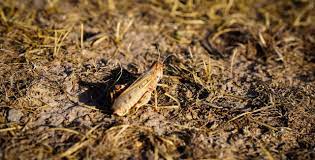KABUL (Khaama Press): The Food and Agriculture Organization of the United Nations (FAO) has warned of a large-scale outbreak of the Moroccan Locust across eight provinces in North and Northeast Afghanistan, the country’s wheat basket.
The sightings of locusts at different development stages have been made in Badakhshan, Badghis, Baghlan, Balkh, Kunduz, Samangan, Sar-e-Pul and Takhar, with fresh reports coming in from Herat and Ghor provinces.
This comes amid a dire humanitarian crisis in the country. The report says, “ Afghanistan remains the world’s largest humanitarian crisis in 2023, and the large-scale outbreak of the Moroccan Locust across the above-mentioned provinces will deteriorate the situation.
“The reports of Moroccan Locust outbreak in Afghanistan’s wheat basket is a huge concern. The Moroccan locust eats more than 150 species of plants, including tree crops, pastures and 50 food crops, all of which grow in Afghanistan. It represents an enormous threat to farmers, communities and the entire country,” said Richard Trenchard, the FAO Representative in Afghanistan.
“The last two big outbreaks, 20 and 40 years ago, cost Afghanistan an estimated 8 and 25 % of its total annual wheat production. Harvest forecasts this year are the best we have seen for the last three years – but this outbreak threatens to destroy all these recent gains and dramatically worsen the food insecurity situation later this year and into next year,” Trenchard added.
The Moroccan Locust is ranked among the most economically damaging plant pests worldwide. The FAO said a full outbreak this year could result in crop losses ranging from 700,000 to 1.2 million tonnes of wheat — up to a quarter of the total annual harvest. This would translate to between $280 million and $480 million in economic loss.
North and Northeast regions of Afghanistan are prone to Moroccan Locust outbreaks. This year has seen “perfect” conditions for a locust outbreak: drought, over-grazing, minimal locust control and just the right amount of rainfall in March and April for locusts (approximately 100 mm). These conditions created the ideal environment for locusts to hatch and swarm.
“We’ve used our cash-for-work methodology to put money into the pockets of farmers most at risk while accelerating mechanical control in communities across the North and Northeast regions. We have also seen a strong, rapid and encouraging response from the Ministry of Agriculture, Irrigation and Livestock. However, their capacity to respond is heavily constrained by a lack of resources,” an FAO representative said.
In response to the threat, funding is urgently needed to support mechanical and chemical control measures alongside on-the-ground surveys to monitor and map locust hatching sites, Trenchard said.
Meanwhile, this comes amid an ongoing dire humanitarian crisis in Afghanistan which more than 20 million people need food and life-saving assistance.







